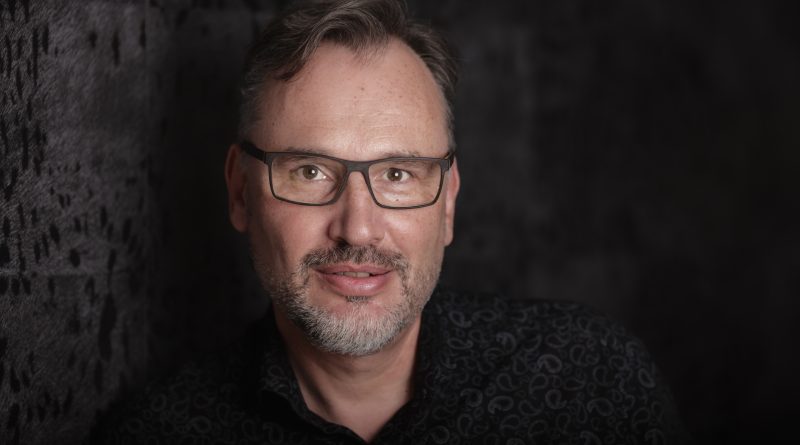An Interview with UJAM Founder, Peter Gorges
Over the years, UJAM has been empowering people with tools to make music with ease and in recent years, also enabling creators to more easily build instruments and effects in which to make music and design sound. This October will be UJAM’s 10-year anniversary. I had the privilege and opportunity to speak to the founder of UJAM, Peter Gorges. Peter has worn just about every hat in the business: musician, sound designer, author, consultant, advisor and founder of several music tech companies.
In the Beginning: Before UJAM
Joey Luck: Hey Peter! Thanks for agreeing to do this interview. Congratulations on the release of IDT2 as well as the new Beatmaker series! Your career has been jam-packed with exciting and very interesting stuff and I’m very happy to have this opportunity to talk with you. While I’m sure Reason users are eager to hear about IDT2 and the Beatmakers, I’d like to explore your extensive background first. How did you get started in the music industry? What is your musical background and what were some of your influences to inspire you to pursue careers in the field?
Peter Gorges: I was brought up teaching myself electronic church organ while listening to my dad’s Abba records. Eventually, I got trained on Bach and stuff via piano-on-an-organ lessons. Around the age of 15, I started as a keyboardist in local bands in my home town in Germany, spending most of my other time in front of my Korg MS-20. I realized that although I struggled in music theory or sight reading, playing music by ear, inventing it, and programming and understanding synths came to me effortlessly. So there you have my strongest influences on my career choice.
Through an internship when I was 19, I was discovered by the local studio and became the go-to arranger, keyboard player and synth programmer; which with sampling emerging in the late 80s, meant that eventually I was playing all the tracks. I also programmed and sold DX7 presets through classified ads. In 1988 I wrote a book about the DX7 which got a favorable review by German KEYBOARDS magazine, so they approached me to become an editor, and everything else basically came from that.
As to musical influences: If you were a sound designer / keyboard player under 30 in the 80s, these were pretty obvious: 80s synth pop, rock, progressive, new wave – everything bathed in synth, and – “thanks” to my Bach and Abba roots – ideally interesting chords. My first strong influence as a synthesizer player is Manfred Mann – I don’t know a way of playing a synth that speaks to me more than his solos.
Joey: As a consultant and sound designer, you have worked with many major synth manufacturers such as Korg, Kawai, Roland, Waldorf, and others. Can you tell us a bit about your experience with those companies? How did you first get your foot in the door performing those jobs? Any particular moments or products in which you are most proud?
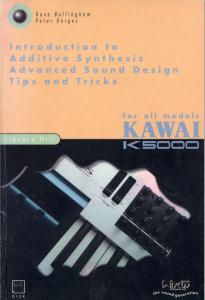
Peter: When I was with German KEYBOARDS magazine, I basically wrote the reviews that would define the fate of a particular synth in the German-speaking market. So I guess I got my first jobs because of Stockholm syndrome – as in “he’s got us by the balls anyway, why not make friends with him and ask him before he writes the review?” Some earlier jobs felt like that.
Then, in the mid 90s, came collaborations with Kawai (K5000, MP series), Waldorf (Wave) and Nord (Modular, Lead), which I recall as real friendships and amazing collaborations. Often I’d just do the factory presets, but sometimes I also got the opportunity to have a real influence on the product, like in the case of the K5000 or the Nord Modular’s software.
Joey: The Kawai K5000 was on my wishlist at a young age. I couldn’t afford it, but my mom would take me to the local music store so that I could play it! I loved the sounds. It’s cool to learn that you were involved with that!
So in 1997, you started the company, Wizoo. What sparked that? What was your role and what products did Wizoo initially produce?
Peter: The publishing company of German KEYBOARDS magazine offered me to start a company with them—they’d fund it, I’d do the work. That was because a reader survey suggested that I was extremely popular at the time (I was dubbed “Honecker” after that) and they wanted to monetize that. Coincidentally, at the time, I had a hunch that the days where writers and sound designers would get paid well were counted, plus I was flattered, so we rolled up our sleeves and got going. I had no idea at the time. In the beginning, Wizoo was pretty much the my-own-business-version of what I had done before for other people, plus publishing books and sample CDs.
Joey: After Wizoo joined forces with Steinberg in 2001, you created the original Virtual Guitarist (ver 1 in 2002 and ver 2 in 2006). It was a bestseller, but Virtual Guitarist was later discontinued in 2007. What prompted that decision? Did you know at the time that you would one day resurrect it?
Peter: Virtual Guitarist got discontinued by Digidesign after they acquired Wizoo in 2005. Because Steinberg had been a great partner and I owed them a lot, I had negotiated for them that they retain the right to sell Virtual Guitarist for another 2 years, that’s why it sold into 2007. There were plans for a Virtual Guitarist 3 in Digidesign to be launched in 2008 but they got under the wheels of “other priorities”. I left Digi in 2008 and at the time had no idea I’d ever do virtual instruments again because I thought that plugins and DAWs were going to die because of smartphones and apps. Well, we all know better now.
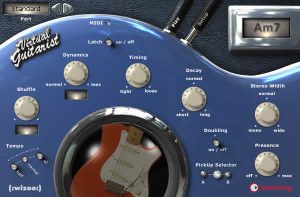
Joey: At that time, you became Managing Director at Digidesign/Avid. Can you tell us a little bit about that transition and your time there? What products did that division, now part of Digidesign, produce during that time?
Peter: Shortly after NAMM 2005, through our distributor, M-Audio, we were approached by Dave Lebolt, CEO of Digidesign, and four months later inked the acquisition. For Wizoo it was the right move at the right time. Wizoo’s relationship with Steinberg hadn’t been the same after Steinberg had been acquired by Pinnacle. And Wizoo was struggling to grow on its own, because we were product nerds, not a sales force. Digidesign were at the top of their game at the time.
For two years it felt amazing – all of a sudden, whatever we touched was gold because it had the Digidesign logo on it. We got to work with some of the very best people in the industry, some of them legends in their own right. We were our own little Pluto in the Avid universe – best of all worlds. We spent three years basically executing on a milestone roadmap that had been part of the acquisition deal and built instruments in Pro Tools format – Xpand, Hybrid, Strike, Velvet, Structure, Transfuser and eventually all the AIR effect plugins that came with Pro Tools 8. At some point, things took a “different direction” which is a whole other, public story that led to me leaving Avid in 2009.
Founding UJAM
Joey: You founded UJAM in 2009 with partners Hans Zimmer and Pharrell Williams. How did those relationships come about and what are their roles with the company today? Are they involved in any stages of product conception and development?
So we shook hands and said “F..k it, let’s do something cool again”
Peter: Well in the beginning, it was Hans’ impulse. He had been a partner in Wizoo since 2003 and – while he didn’t object to the sale to Digidesign – because he knew that was the right move for me and the company at the time – I think he silently scoffed at the idea of us leaving him in favor of a big corporation like Avid. Mind you – we were in the middle of building the biggest sampler of all time for him when the Digi deal happened. So he kept on softly teasing me about that, and eventually did so in a moment when I was sick of Avid and ready to jump and not caring about where I’d land. So we shook hands and said “F..k it, let’s do something cool again”. All we had for an idea was “a Guitar Hero success kind of thing that makes making music easy and fun for millions of people”.
The inception of something like a company took almost a year, and pretty early on Hans brought in Pharrell – I didn’t even know of him at the time (I know, embarrassing). With him, we developed it into an idea of creating a music platform for the PlayStation/Xbox; to turn it into a worldwide experience including events and competitions. Where it went from there is a story of its own – we raised a lot of venture capital, rode the Silicon Valley bubble for a few years and then the VCs pulled out because we weren’t becoming the “Twitter for music” quickly enough. Hans and Pharrell loyally stayed on and are partners to this day, although not involved in the everyday business. Hans and I are always playing with ideas at the intersections of what we do.
Joey: Speaking of events and competitions, in 2011, there were some very exciting opportunities for UJAM users to collaborate with Hans Zimmer; including a search for a vocalist for Assassin’s Creed Revelations and an opportunity to chant along with Bane in The Dark Knight Rises! Can you tell us a little about those experiences? Any chance UJAM might offer these types of opportunities again in the future?
so that chant you hear in [The Dark Knight Rises], that’s thousands of UJAM users yelling at their laptops.
Peter: Well when we got venture capital behind UJAM and had scored runner-up at TechCrunch Disrupt, our story was “Enable everyone to make music”. The campaigns you mention were amazing opportunities to send millions of people our way and test that proposition, and both came through Hans. The Assassin’s Creed “Revelations” campaign used UJAM to crowdsource a voice for the Assassin’s creed theme which he and Lorne Balfe composed at the time. It went viral and I think collected 3 million views in a few weeks.
The Dark Knight campaign let people record the Bane war chant into their laptops, to be collected and mixed together at Hans’ studio – so that chant you hear in the movie, that’s thousands of UJAM users yelling at their laptops. Both campaigns were great fun and great exposure for UJAM, but we retained just a few users. So, while it made us money from the studios and was a great learning experience, it didn’t take us anywhere.
Over the years: UJAM growth and partnerships
Joey: In the beginning, UJAM was primarily a web-based music creation platform. How has the company grown and changed since then?
Peter: I’ll try make my answer short, but I am happy to elaborate on certain aspects if Reasontalk users are interested.
First of all, at some point we bought back the company from the Venture Capitalists and performed a restart so we could retain the team and intellectual property. Of course, that entailed taking a lesson to heart: We weren’t looking to be a unicorn in the music creation space anymore – because we had burnt several millions to prove there is no such a thing. Instead, we continued with the aim to build a sustainable company developing meaningful music tech. So, we hibernated our own cloud music tech and did a lot of consulting and custom development, where we basically rented our expertise and tech geniuses to other companies to keep the company afloat. After all, we were probably the only company in the world that had deep music and cloud expertise, and that had a lot of value to our professional network.
In 2013, I had one of our Musikmesse coffees with Ernst Nathorst-Böös (CEO of Propellerhead) and he told me they were looking for a scriptable sampler engine for Reason, to make building Rack Extensions easier for their community of third-party developers. So, after the Hypersonic engine (basis for Steinberg Hypersonic and later Digidesign Xpand) and Structure (for Digidesign), it was the third time that Paul Kellett, the mastermind behind our music tech, got to build yet another virtual instrument engine. It was dubbed IDT (Instrument Development Toolkit) in the Propellerhead world and that’s what you guys have come to know. We also initiated the A-List series of instruments as the first products to use IDT and help us establish a userbase and experience – and of course we enjoyed building great rack extensions with Propellerhead.
Eventually, we spread out into the non-RE world and turned the engine into a whole platform business, now dubbed UJAM Gorilla Engine, and similarly rolled it out in products like our Virtual Guitarist and Virtual Drummer series. It runs on hardware too so there’s going to be a lot of products coming out from larger launch partners very soon, but so far it’s been pretty stealth. So, UJAM Gorilla Engine and Virtual Instruments are now our main business units, with custom development still being a valuable staple, more and more of it being building custom instrument concepts for our UJAM Engine partners to fuel the engine business.
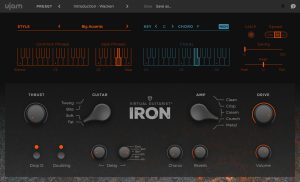
Joey: You mention releasing the Virtual Guitarist series under UJAM, which was in 2016. The original Virtual Guitarist had been discontinued and out of development for close to ten years. How did it feel getting back to developing a series of plugins under the iconic name you had created years before? Were there any challenges with that?
Peter: It felt like pulling a prank on the industry, it was a lot of fun. To start with, nobody except us knew that the Virtual Guitarist brand had been available for years, so we claimed it. Secondly, Virtual Guitarist had left a gap that to my surprise, nobody had managed to fill. Most companies who created VG-”inspired” products hadn’t really understood why it had been so incredibly successful in the first place. My hunch is most of them thought “to compete with Virtual Guitarist, you need more features, more flexibility, more editing depth”. We knew that the secret to Virtual Guitarist’s success was that it could do only a small fraction of what a guitarist can do, but it did that very well, very fast, and it didn’t sound like MIDI. In other words, out of probably 2304587 ways to play a guitar, VG gave you 100, but it was incredibly fast and easy to use, and real.
That’s one reason for example why 50% of VG users were guitarists, as a Steinberg survey revealed to our surprise. And although I didn’t invent it (two geniuses named Sven Bornemark and Paul Kellett did), it was always close to my heart because it is so highly controversial. It’s got this built-in finger to people who think you should not be allowed to do certain things because you don’t qualify. Instrument virtuosos have all our admiration, but if music history depended only on them – where would we be, right?
If you really look at what UJAM has always done, that’s a big part of that. And of course, over the 10 years we left VG up for grabs, we all continued to think about it, and these ideas went into the new series. That’s why you now have one plug-in for every single purpose. That is why there are now way less controls and at the same time more realism and depth.
Our goal with IDT2 is to enable anyone with a good idea for a virtual instrument or effect to just build it without requiring C++ coding skills or a team of engineers.
Joey: As we understand from the release notes for IDT2, it makes it even easier for content creators to create Rack Extensions. What more can you share about it? What makes it different from the original IDT?
Peter: Our goal with IDT2 is to enable anyone with a good idea for a virtual instrument or effect to just build it without requiring C++ coding skills or a team of engineers. Because why should you have to be a programmer to build great instruments and effects?
In this particular release, we made a special effort to significantly upgrade the user experience and functionality for RE developers. We replaced the former IDT instrument editor by our brand new editor, which is a true cross-platform editor running on Windows and macOS. It is continuously being improved, so we’ll release more fixes and usability improvements in future SDK releases.
A major SDK functionality upgrade is user sample loading, which means that people can now build REs allowing users to use their own audio content. Other special RE features are the support of CV inputs and outputs, an audio input which now enables RE developers to build effects with IDT2. There is also a sample oscillator now that’s capable of granular sample playback and manipulation, plus some more valuable add-ons like Ladder Filter, Analog Oscillator, Wavetable Oscillator and a Bus Compressor.
In the future, we will focus on adding even more customizability and on making user interface creation dead-easy. The benchmark for me is when I will start building my own instruments – I’m already using it for prototyping and it’s a huge step from having to draft something on paper and then hoping for the best while 20 developers hack away on it for half a year.
Joey: Apart from developing the IDT, you had worked with Propellerhead as Strategic Advisor. What were your responsibilities in that position and what might we recognize as result of your involvement?
Peter: The project – which was limited to 7 months – began with a call from Ernst Nathorst-Böös while I was on vacation: Did I think I could provide some outside expertise to them to grow their Rack Extension business – in terms of revenue, catalog quality and user satisfaction. I went to Stockholm, looked at it, found it to be not only possible but also very interesting, and that was that. I also bought fully into the project by tieing my fee to success.
Propellerhead was amazingly open and collaborative, so the project spawned a lot of initiatives, the fruits of some of which we’re probably just beginning to see. I’d say the most visible outcomes for users were the Booster Packs and the Rigs, which I see as a win:win for Propellerhead, developers and users alike. But there was also a special development program to foster Rack Extension development by brands only known in the VST world at the time. StringWerk by e-instruments as well as Rack Extensions from Heavyocity and Soundiron came out of that, to name a few.
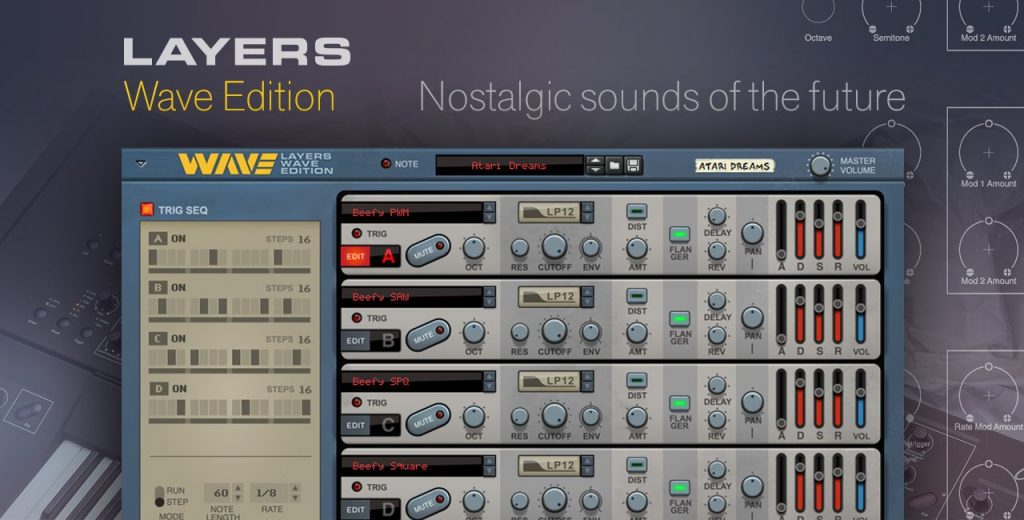
Joey: Another product you helped develop for Propellerhead recently was the Layers Wave Edition Rack Extension. From the credits in the manual, we learn that the samples come from your personal Waldorf Wave sample collection, originally recorded in 1995 and remastered. That is very cool! Can you tell us about your experience and relationship with the Waldorf Wave?
Peter: Apart from the Korg MS-20 and the Yamaha DX7, the Waldorf Wave is probably the only other synthesizer that represents a stepping stone to a whole new level in my career – synths these days can’t do that anymore, can they? It started one day at Frankfurt Musikmesse when I saw an early prototype in a vitrine, and I felt like seeing the light. Later, I got in touch with Waldorf’s founder Wolfgang Dueren, who became almost like a mentor for me in the following years. I ended up writing a long story in German KEYBOARDS about the Wave and designed some of the factory presets. In 1995 I produced a record for Waldorf, and I could suddenly charge top dollar for studio jobs when I brought it. I quickly figured out by accident that people wanted to like my tracks better when I played them on the Wave (no matter where the audio came from). The synth had this “bigger than life” aura about it.
Long story short, at some point I realized that the most powerful sounds from the Wave were those where you stacked 8 voices per note (a standard Wave had 16 voices). So I sampled them and put them into my Akai sampler, where I could now play them with 32 voices of polyphony (or the equivalent of 256 Wave voices). I have yet to find a synthesizer that can produce these sounds – they cut through everything and they live and breathe the special character of the Wave’s aliasing and resampling. At the time, I turned these samples into a sample CD-ROM published by Waldorf and AKAI called “Ultimate Waves”, which was quite popular but has been off the market now for ages.
In the last 3 years I had been looking for ways to put these samples into a virtual instrument for my own purposes, and when I saw LAYERS come out last year, I thought that was the perfect platform for them and so easy to do. I proposed it to Propellerhead and we did it almost guerilla-style – it was a fun project, and it’s successful too, which is particularly gratifying like everything you do for yourself and see other people benefit from it.
Joey: Aside from Propellerhead, UJAM has partnered with many popular companies; such as Korg, Sony, Warner Brothers, Ubisoft, Universal, and more. What can you share about some of those relationships and UJAM’s involvement with those companies?
Peter: Most of what UJAM has done until maybe two years ago was invisible to the industry and the public, simply because we were still getting the tech together and didn’t want to spend time building products before we knew exactly what we’re doing.
Some of the partnerships with the companies you mention came about because we rented our expertise to them. Because we have a pretty unique combination of both deep musical and instrument understanding AND music-agnostic hardcore cloud, hardware and system-level expertise, we had an edge on most of the industry. And for a time we were happy to provide that to the industry, investing the profits into stealthily building our own stuff.
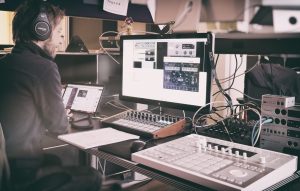
Joey: What is a typical day like at UJAM headquarters? How many employees? Are there several departments working on different things at the same time? For instance, an IDT/UJAM Engine department vs. a Virtual Guitarist/Drummer department?
Peter: The way we organize our company, we have no departments, or roles, but you could say we’ve got business units, and yes, some people focus more on UJAM Engine, some more on virtual instruments, some on core tech or custom development. We grow every year, this year going on 40 people. I wouldn’t say there’s a typical day at UJAM – we’re working very agile, teams organize themselves depending on what’s cooking at the moment. My activities range from cooking up a product idea to making a connection to an industry partner to sound design or manual writing to strategic planning or developing people – I’m all over the place, and I enjoy anything that’s entrepreneurial.
Joey: Has your role at UJAM changed at all? Would you say the mission is still the same?
I’d say that to this day our products still focus on the same mission: Make stuff simpler, more fun, more inspiring, less time-wasting.
Peter: My role is always changing, as is the role of everybody else in the company, and that is mainly because in UJAM our product is not only music tech, but also company culture. We work very hard to be and become a self-organized, non-hierarchical company, because not only is this the most efficient way to work in the field of innovation, but it also replaces business roles by competence and enables every person on the team to be what they want to be. It sounds a little esoteric yet, but it’s where in my belief everything is going.
Talking of enabling people: That part of our mission has never changed. UJAM’s original mission was to make music creation so simple that it enables people to create music even if they have little to no skills. I’d say that to this day our products still focus on the same mission: Make stuff simpler, more fun, more inspiring, less time-wasting. Because there’s only so much time per track, and only so much patience and magic moments to get your idea out.
New Release: The Beatmakers
Joey: You just released the Beatmakers in both RE and VST/AU/AAX formats. Can you tell our readers what they are?
Peter: They are electronic drum products that allow people who don’t necessarily live and breathe Hip-Hop, Trap or EDM to use these sounds and grooves in their productions. It’s our first foray (as UJAM) into the electronic music realm. We’re releasing three for now: EDEN (EDM), DOPE (BoomBap Rap) and HUSTLE (Trap and Grime). And as with everything, we always create Rack Extension versions of them. These are our first products in the RE world under our own brand, with support from our friends at Propellerhead.

Joey: How did the Beatmaker series come about?
Peter: We made the observation that electronic beats are often looked down upon by traditional musicians – because yes it’s easy to make a (crap) beat, and yes there’s hundreds of thousands of loops out there that you just drag into Ableton and you’re done. Yet, what many people tend to ignore is that creating a stylish, cool and tasty beat takes a ton of talent and craft – I am fascinated by that.
With the Beatmakers, we wanted to take our signature approach to such a topic – the Beatmakers are very Virtual Guitarist in that they’re fail-free (whatever you set the UI to, it’s never “wrong”) and focused on being fast and intuitive, but also super-real and true to the genre. We hired producers, each of which lives and breathes the genre. Kevin Schroeder who did Eden for example, is a household name in the EDM genre for his work for u-he and Vengeance. Daniel Ruczko (DOPE) is a friend who we knew produces incredible-sounding Hip Hop with his project in L.A., Martin Seyer (HUSTLE) is an A-League commercial producer who’s sought after for exactly his knack for extremely well-produced, finicky and sub-bass-heavy beats. All three brought their taste and experience, while we at UJAM focused on putting it all together and making sure each title is super authentic and stylish – from look and feel to UI design to custom-designed effects to mixes. I’m very curious as to whether people will appreciate all that, and whether the idea gets across in a market that’s so overflooded with cheap content. It’s an exciting bet.
What’s next for UJAM?
Joey: What plugins might we see next from UJAM? Any chance of a signature series with Hans and/or Pharrell?
Peter: Our goal is to give people the instruments they might not necessarily be able to play for use in their production. You can’t play the piano? Is there a reason why you shouldn’t be able to produce believable, professional sounding piano tracks? We believe not. So, of course when we re-started, we started with what we knew would be popular, and we’re building from there.
On Hans and Pharrell: Yes, we’re thinking about that and have done some work behind the scenes. But it has to make sense to the users. Like, what Spitfire did with Hans makes total sense – they use his expertise to make film composers sound better. We wouldn’t do something meaningless and stick his name on it just because he’d do it for us – we’d do something that’s true to our approach. As to what that might be: Up for guesses!
Joey: Well anything involving those two would undoubtedly be awesome and incredible additions for sure! So what does the future of UJAM look like? Is there still a focus on the web-based platform, UJAM Studio?
Peter: While there is no public focus on UJAM Studio as a web platform, our vision behind it is as vivid as it’s ever been. Ultimately, with everything we do, our ultimate goal is to be the platform that powers music creation everywhere. We’ve learned a few things along the way, and we’re innovating and building as we go. It’s a bold goal, and it will take time and the right partners, but we’re on it. I have to be a little vague here as we’re working on things that aren’t public.
Joey: That sounds exciting and I’m sure everyone is interested to see what UJAM does next! Well Peter, this has been fun. Thanks for taking the time and sharing with us all this interesting info about yourself and UJAM. Now off to play with these Beatmakers! 🙂
Discuss this article in the ReasonTalk Forum!
About UJAM
Website: www.ujam.com
Beatmaker EDEN: Rack Extension, VST/AU/AAX
Beatmaker DOPE: Rack Extension, VST/AU/AAX
Beatmaker Hustle: Rack Extension, VST/AU/AAX
Information about the Rack Extension IDT: www.propellerheads.se/developers

